As autumn approaches and the days get shorter, it’s tempting to sack off outdoor adventures and succumb to the sofa. But by embracing night hiking, there’s no need to put your walking gear away until spring. Don’t be fazed by the dark! Heading outdoors between the hours of dusk and dawn simply means adjusting your mindset, attuning your senses and slowing your pace a little.
It can be immensely rewarding. Moonlit landscapes, spectacular night skies, the signs of nocturnal wildlife – it’s all out there. Hiking at night is a good way to dodge the crowds on popular trails. It will also sharpen your navigation skills and give you a new perspective, even on familiar walks.
Heading out to enjoy a sunset or sunrise can also be a great way to shoehorn a memorable micro adventure into the working week. Here’s our guide on how to step out safely in the dark.
If you’re in the hills when the light has left them, here are some tips from our experts to keep you confident and safe.
What to pack
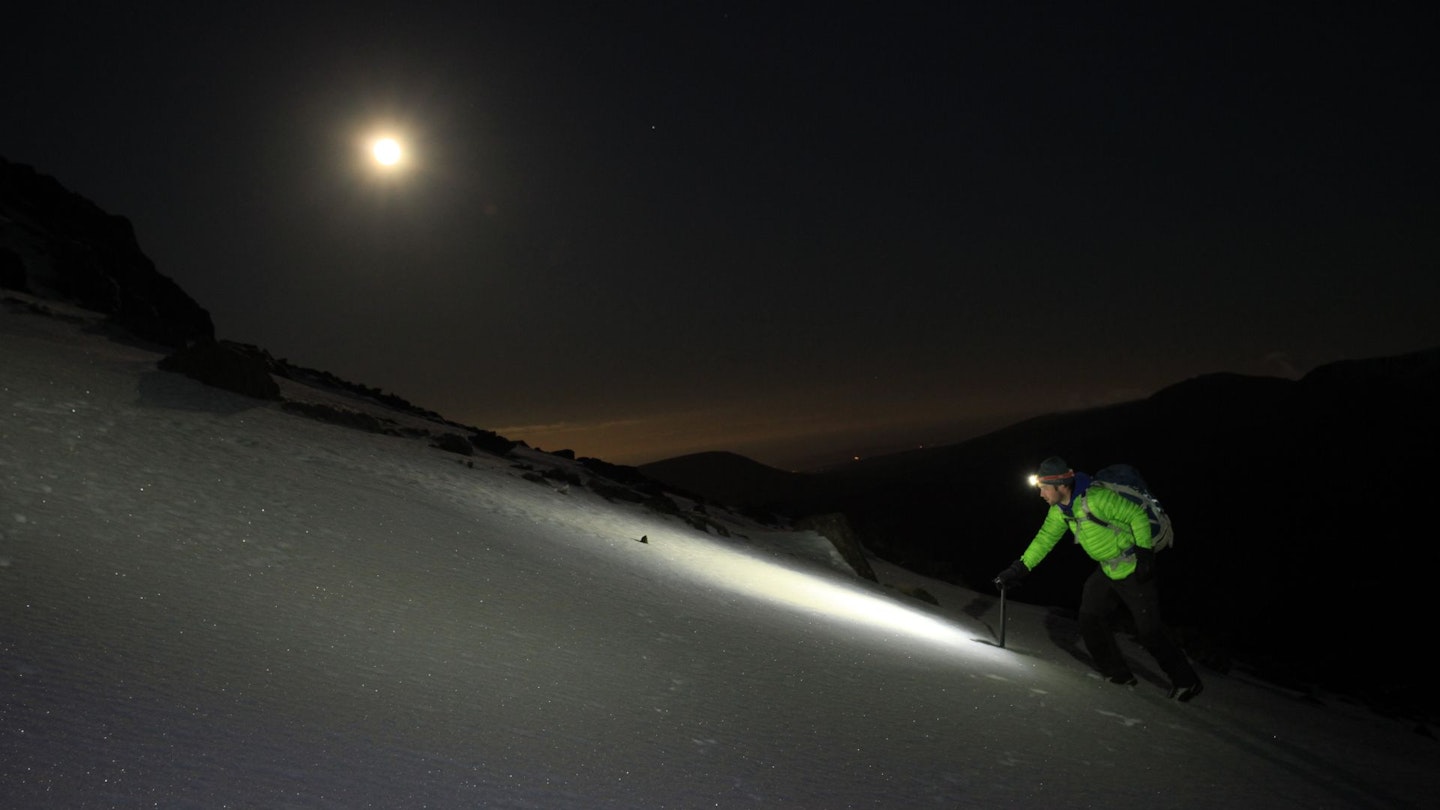
Clothing
As well as your usual hillwalking gear, you’ll need extra layers, since temperatures drop overnight, especially in the hills. Pack a cosy beanie, gloves and an insulated jacket. If you have a jacket or pack with reflective strips or patches, then wear that too. It will make you much easier to spot.
Consider wearing hiking boots rather than trail shoes for their additional protection and ankle support. You’ll appreciate it if you stumble in the dark or step in a muddy bog. Trekking poles can also help with stability.
Bring plenty of snacks and an insulated flask of tea, coffee or hot chocolate. Eating and drinking not only fuels the body, but warms you up too, by keeping your metabolism active.
Navigation
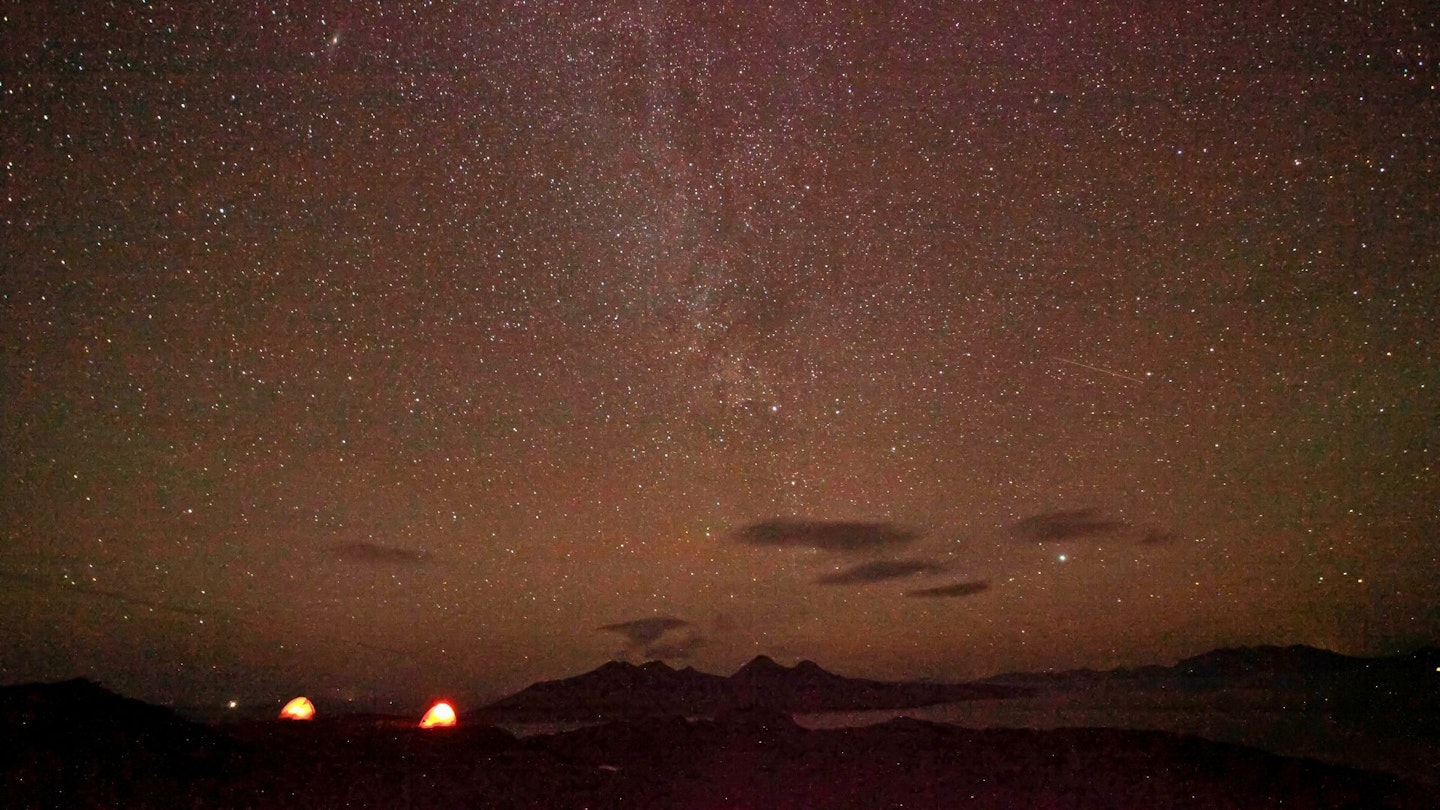
Take either a GPS unit or a fully charged smartphone in addition to a map and compass. They’ll get you back on track if you stray off route, since identifying landscape features is trickier in the dark.
But remember that GPS and smartphone devices can run out of power or struggle in the cold. Such devices also stipulate they're for reference only and shouldn't be solely relied upon for navigation. You should use them in conjunction with a compass and map.
As well as a mapping app, download a night skies app to your phone so you can identify constellations. If you’re a keen stargazer or aspiring astrophotographer, don’t forget binoculars or a small telescope, your camera and a tripod.
Head torch
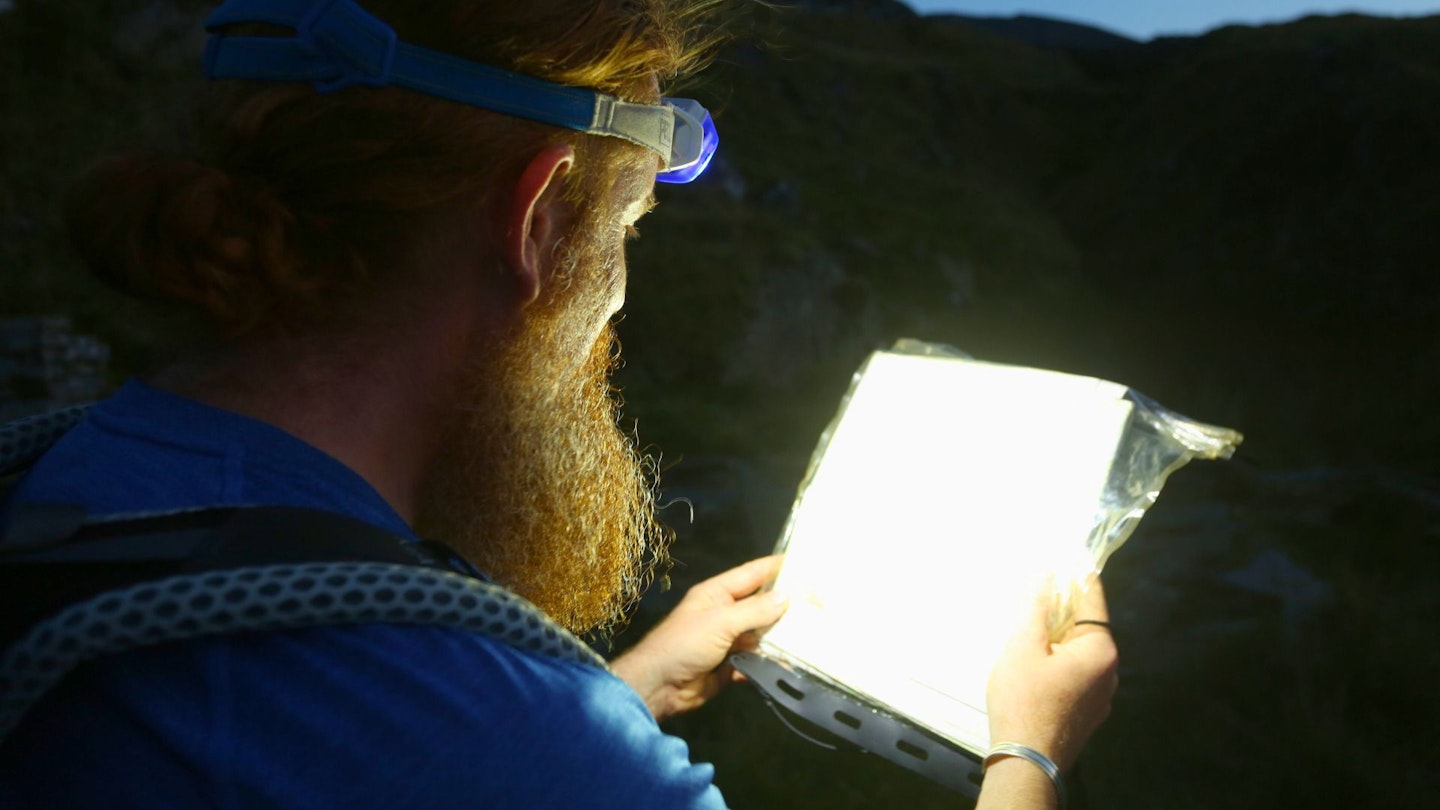
Last but not least, you’ll need a good head torch. This is preferable to a handheld torch, as it frees up your hands and is less likely to get dropped or lost. Make sure it’s fully charged or that you have spare batteries.
When buying a head torch for night hiking, check it has a red and/or green light mode. This is useful for preserving natural night vision (more on this below), since the eyes are less sensitive to the longer wavelengths of red light.
Also look for a head torch with a high output (about 500 lumens) and multiple brightness settings and both flood and spot beams, so you can switch from low to high power and use your lamp for close-up proximity work as well as seeing what’s down the trail. Ensure it fits comfortably on your head without bouncing. A three-point strap is often more stable than a basic elastic headband.
Check the weather
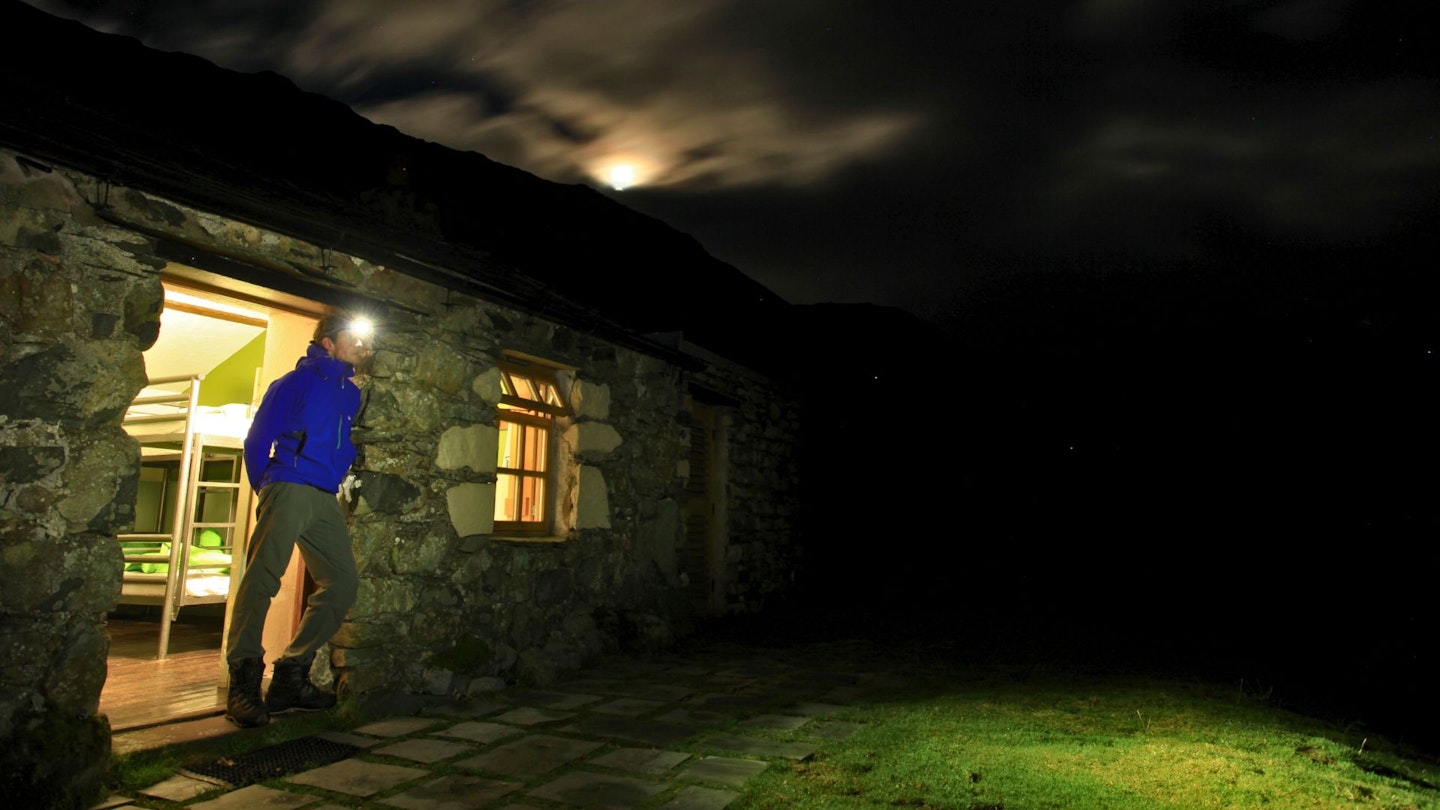
If you’re new to night walking, choose a clear, dry night (ideally with a full moon) for your first go. Navigating the hills when it’s dark and clagged in is unlikely to make for an enjoyable inaugural experience.
The Met Office's Mountain Weather Forecast, Mountain Weather Information Service, or Mountain Forecast are all excellent resources for UK mountain weather forecasting. Or you may have another forecast service you prefer.
Set out just before dusk or dawn, so you can enjoy the sunrise or sunset. Colder winter months typically offer the clearest skies for stargazing, since there tends to be less humidity in the air.
Plan your route
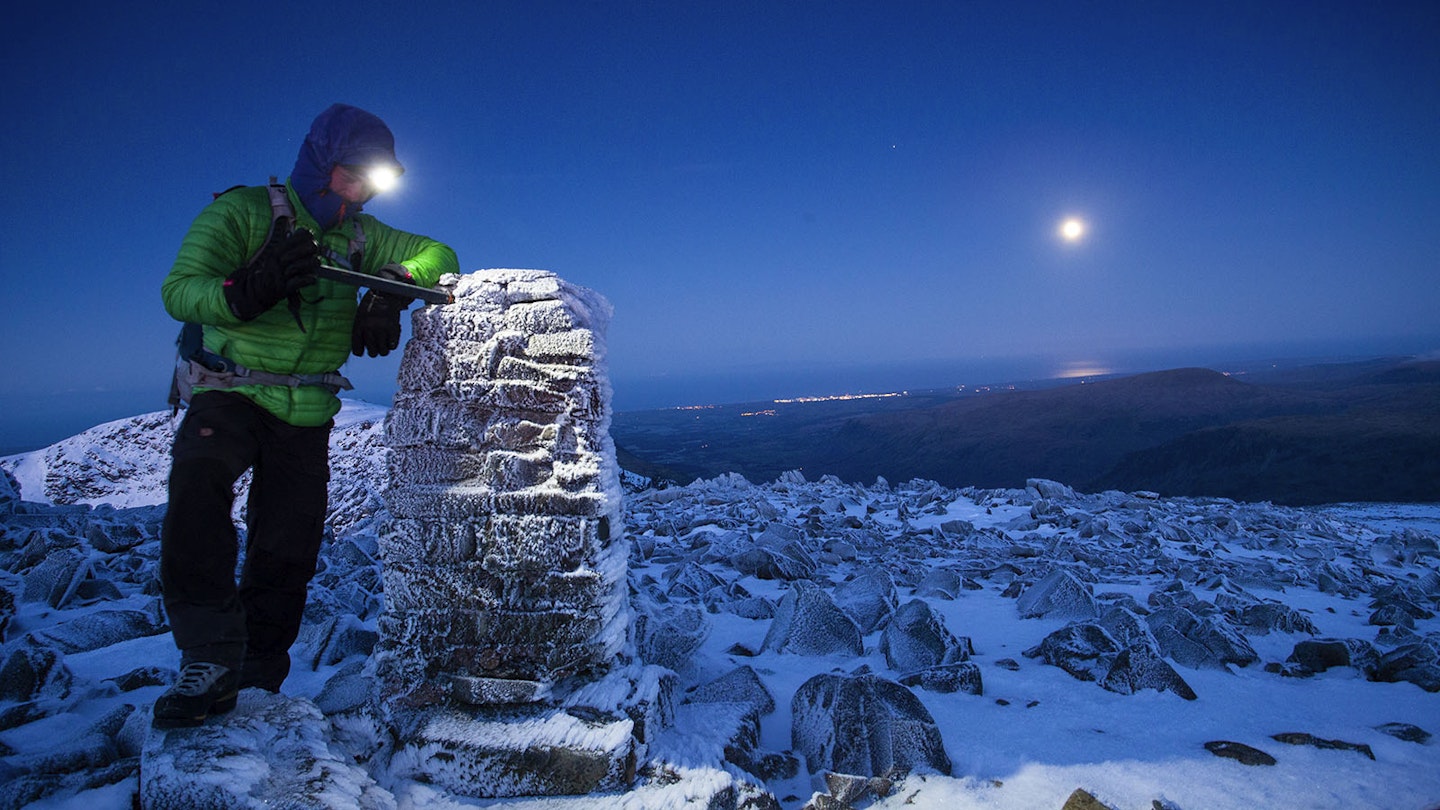
Having a knowledge of the terrain, gradient, obstacles, and landmark features in advance will make following your route easier when vision is restricted. Knowing your surroundings is also useful when determining if you’ve diverted from your planned path.
You can also use a physical map or appropriate trail app to study your hiking route before heading out.
For your first night hike, tackle a familiar trail or a route that’s easy to follow. Slow down and don’t expect to hike at the same pace you would in daylight. It’s easy to miss landscape features and trail signs in the dark.
If you can, avoid hiking solo. Bring a friend or go in a small group. Alternatively, you could join a guided night hike. Many national parks and wildlife trusts offer regular night hikes, from bat and owl walks to stargazing experiences.
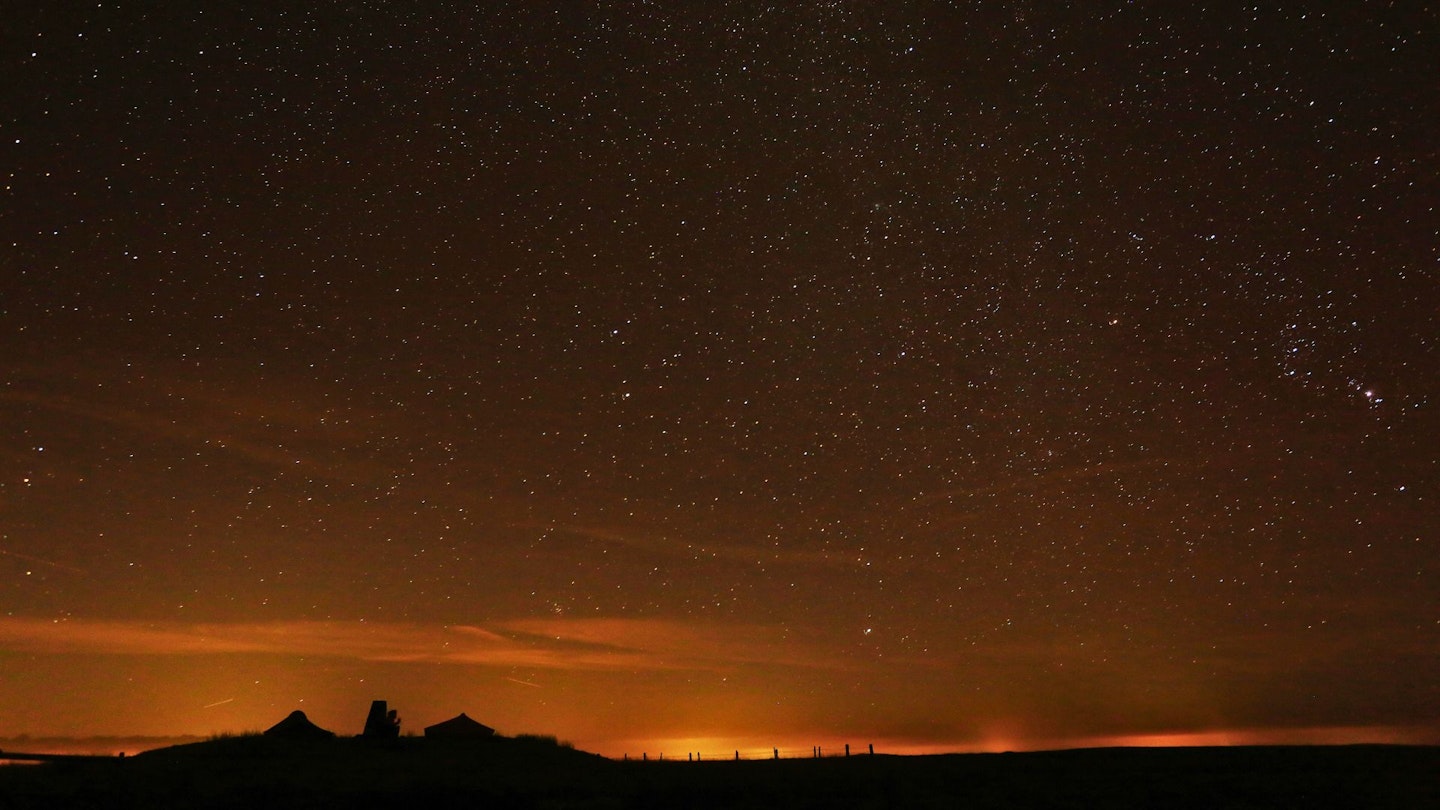
If time is limited, then there’s no need to travel hours from your hometown or city. The surrounding countryside can be a great place to go night hiking. At night, distant streetlamps, office blocks and other urban features are transformed into impressive light shows.
If you want to roam further afield, take a trip to one of the UK’s Dark Sky centres. This includes the South Downs, Exmoor, Bannau Brycheiniog (Brecon Beacons), Eryri (Snowdonia), Pembrokeshire, the North York Moors, the Yorkshire Dales, Northumberland, the Galloway Forest and Grizedale in Cumbria.
All of these sites are nationally or internationally recognised for the quality of their night skies, thanks to low light pollution. On the clearest nights, you might see our galaxy, the Milky Way, and even Andromeda – which is the most distant object visible with the naked eye, at 2.5 million light years from Earth.
Use your night vision
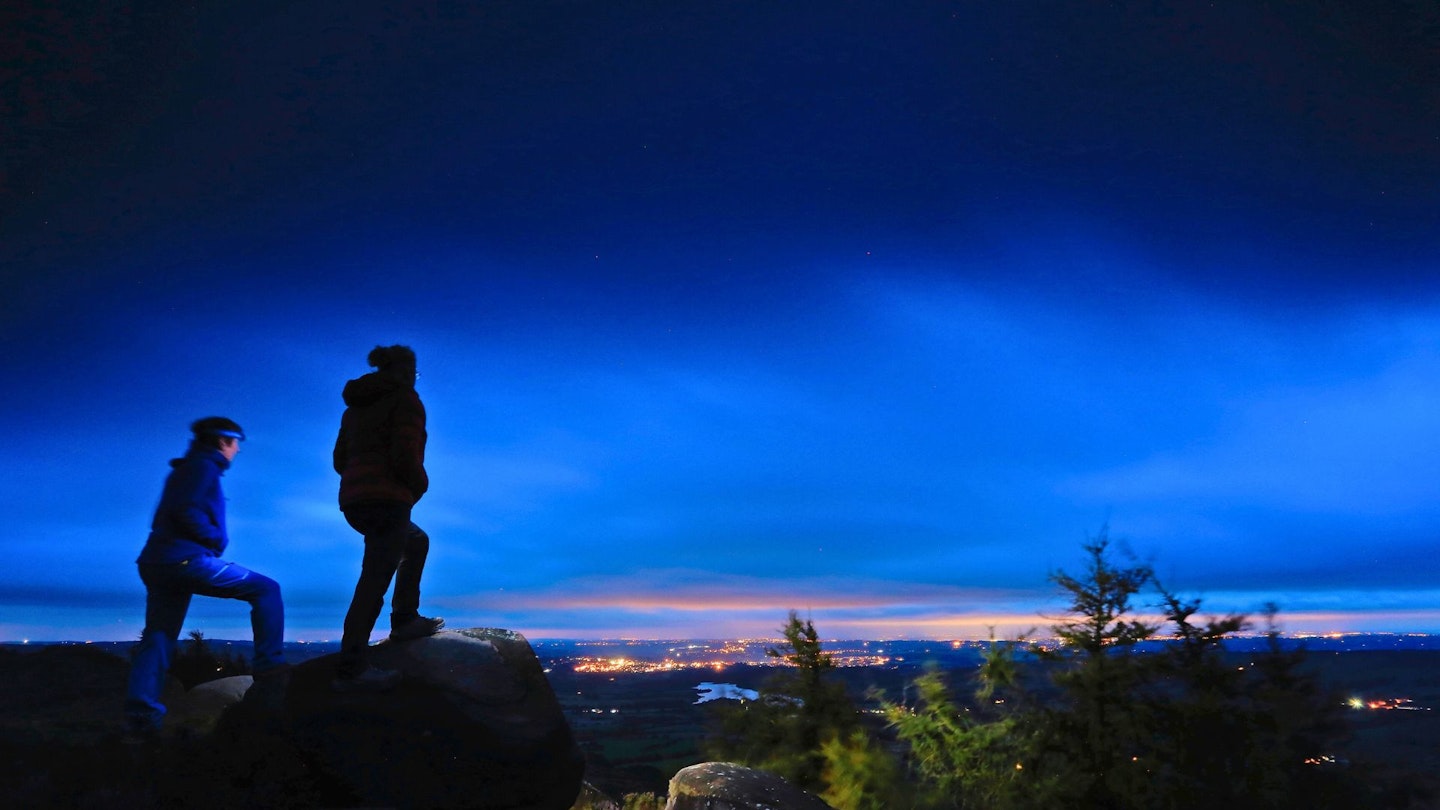
It might seem counterintuitive, but on moonlit nights, limit the use of a head torch so your eyes adapt to the darkness. This happens gradually as the rods in our retinas take over from the cones that we use in daylight.
These rods are clustered around the edges of the retina, which means you can actually see better at night by using your peripheral vision. Rather than staring directly at an object, try to ‘scan’ the landscape.
Just a few seconds of exposure to bright light will impair your night vision, meaning your eyes then have to adjust all over again, so try not to use your head torch too often. Don’t shine the beam directly in people’s faces either, so you don’t dazzle them or ruin their night vision.
Know how to navigate
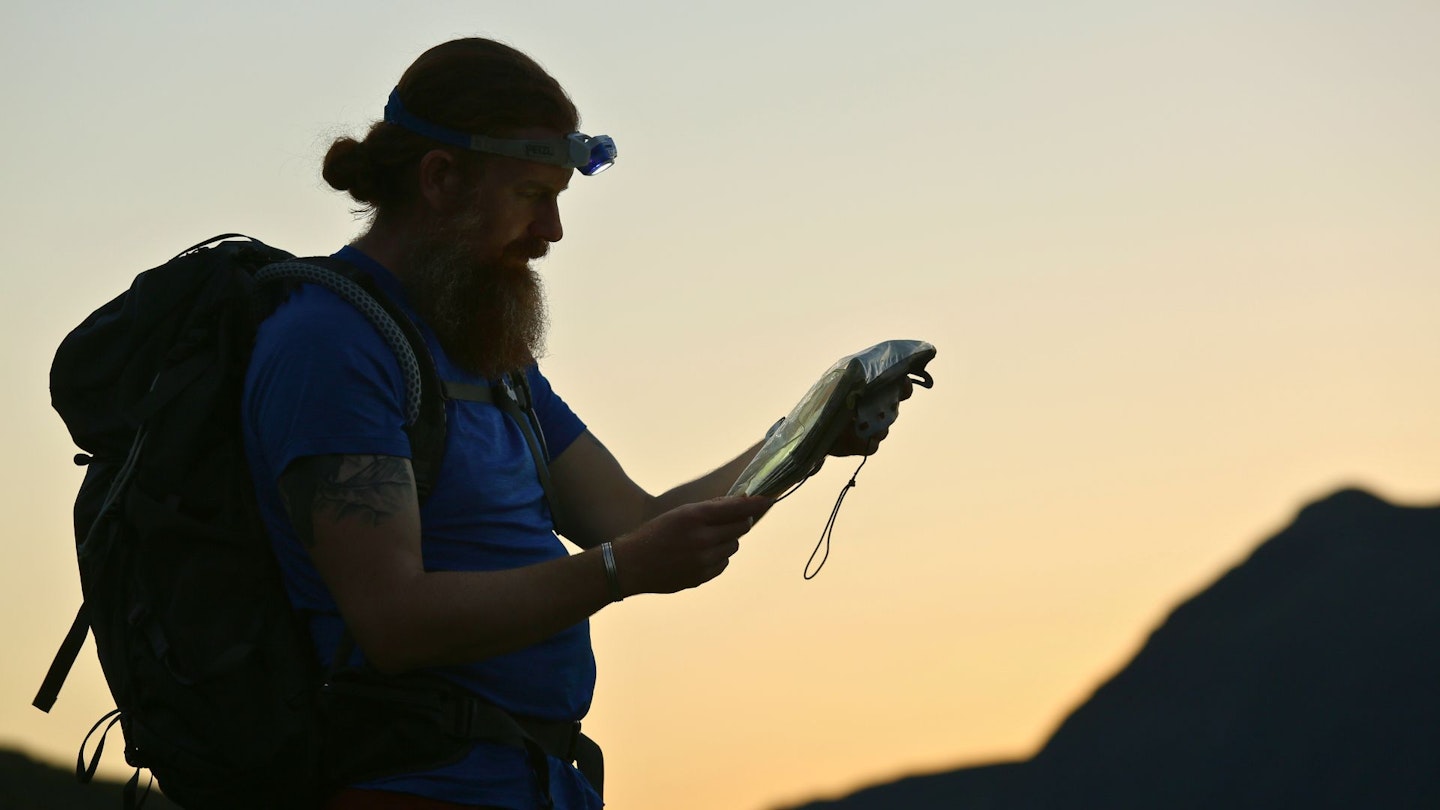
The ability to use a map and compass is a key hill walking skill. At night when you can’t rely on being able to see your route ahead beyond the beam of a head torch, being able to walk on a bearing taken from a map is essential.
Sharpen your navigation skills. If you've got a friend who can help with this, use them. Alternatively, find a course to take such as those offered by Mountain Training, for example. If you're night walking alone (which we wouldn't recommend) always make sure you let someone know your route and estimated finish time, and keep them updated so they know you're safe!
Know your timing and pace
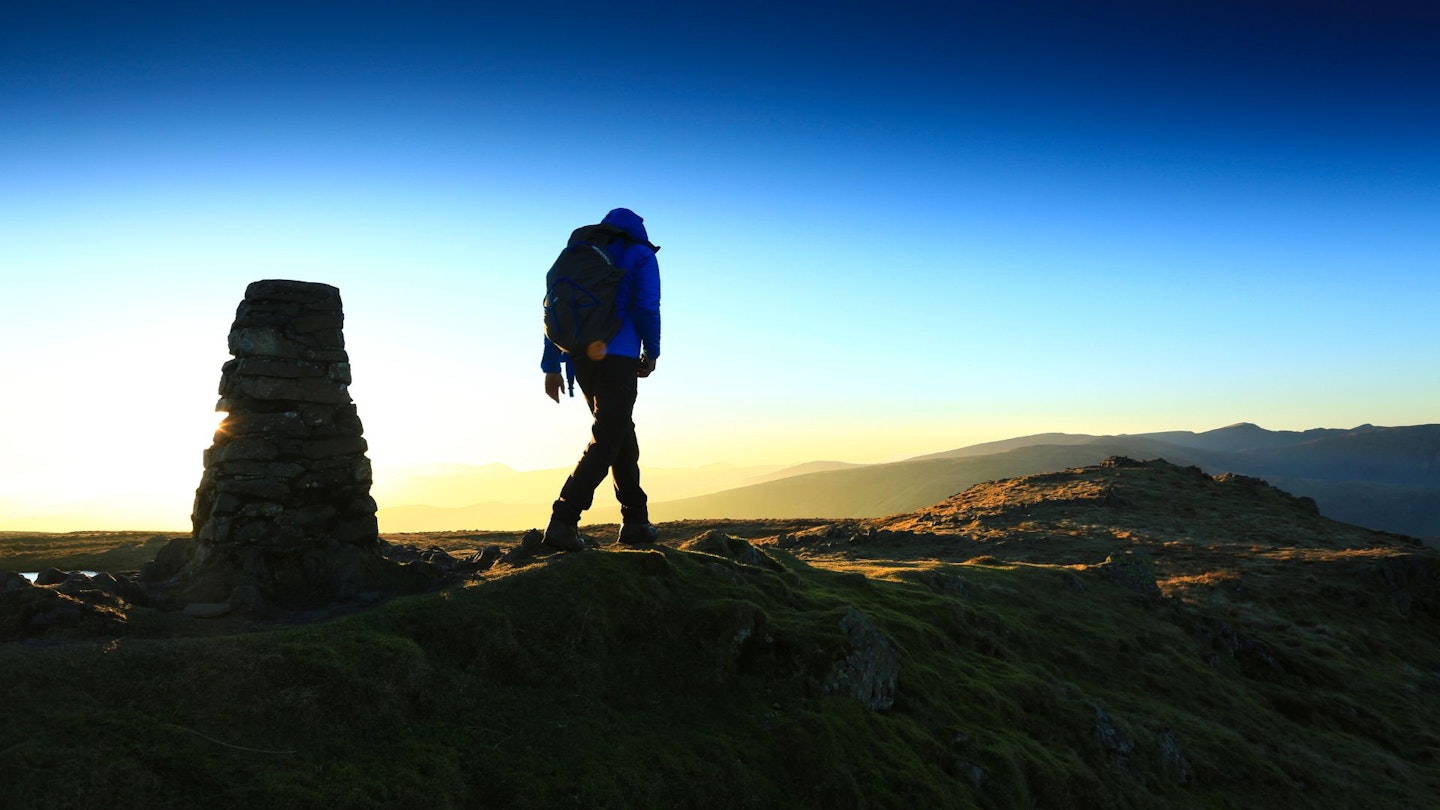
Even the most obvious path junctions can be invisible at night. Knowing how long or how many paces it should take to reach a location will help you ensure you don’t miss key navigational waypoints.
Just like knowing the terrain, and as we pointed out before, use a map to study your route beforehand and make notes. However, it's crucial you're able to make adjustments when necessary if you're moving faster or slower than your anticipated pace.
Practice makes perfect
Navigating and walking at night is a skill that gets better with practice. Developing your use of bearings, pacing, timing, and other techniques during the day or on familiar terrain in the dark will make night nav much easier.
